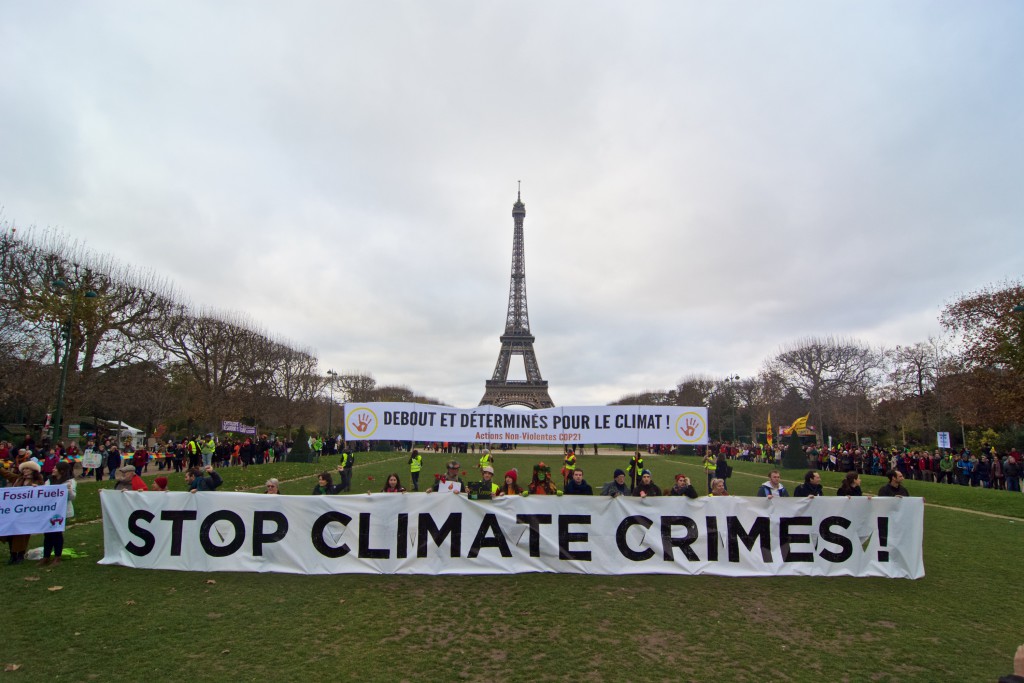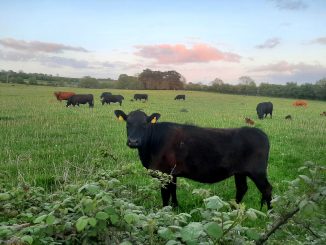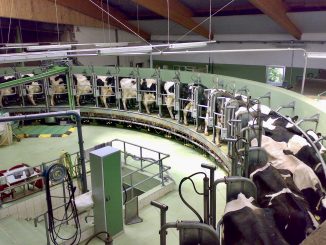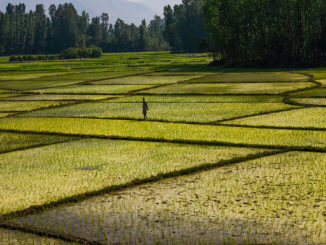The Paris agreement reached Saturday 12 December 2015 at the COP negotiations has been hailed as historic. So is it? And what will it mean for farming and food?

The agreement brings together 195 countries plus the EU to define a common long-term vision on how to deal with climate change. These 196 parties are committing to limit global temperature rises to “well below 2 °C above pre-industrial levels”. Importantly, and to an extent unexpectedly, they are also “pursuing efforts to limit the temperature increase to 1.5 °C”.
Read: The Paris Agreement full text
However the the gap between ambition and action in the deal is too big as Climate Scientist Dr Cara Augustenberg (Friends of the Earth Ireland) said. The current commitments will lead to a warming of about 3 degrees, which is runaway climate change.
Indeed the text itself “notes with concern that the estimated aggregate greenhouse gas emission levels in 2025 and 2030 resulting from the intended nationally determined contributions do not fall within least-cost 2 ˚C scenarios but rather lead to a projected level of 55 gigatonnes in 2030″.
The agreement brings together all the pledges of all parties to cut global warming emissions within the next 10 to 15 years. It seeks to establish improved review and monitoring systems, through which all parties better their emission reductions plans in line with science. Every five years, a global stock-take is to be conducted.
Wealthier countries – the ones most responsible for climate change – must provide improving levels of funding and technological support to help poorer countries lower their emissions and adapt to the consequences of climate change. This “climate finance” shall be E100 billion per year until 2025. This figure should be improved upon from then onwards. However, as global research organisation CGIAR point out “this collective financial goal does not include binding requirements on financial contributions by individual countries.”
So, much aspiration, not much in the way of specific investments or binding targets. “By comparison to what it could have been, it’s a miracle. By comparison to what it should have been, it’s a disaster” as George Monbiot put it.
What does this agreement mean for farming and food?
At EU level the move towards net carbon neutrality will effect all sectors including agriculture. Early next year, the EU, which argued as a block in the COP negotiations, will work out the details of its own climate policy and member state burden-sharing. High emissions sectors like beef and sheep are arguing via their Member States for special exemptions. Its current EU target to reduce emissions by 40% by 2030. This in itself, like the Paris Agreement, will not reach the new target of 1.5 degrees warming.
So, more aspiration without the actual ability, or even a plan, to reach the target.
However, were 1.5 degrees to be reached, there would be significantly less climate extremes for farmers, especially those in the tropics.
The references to food and farming in the text are minimal, and are in the non-binding parts of the text. Here they are in full:
“Recognizing the fundamental priority of safeguarding food security and ending hunger, and the particular vulnerabilities of food production systems to the adverse impacts of climate change,”
“This Agreement, in enhancing the implementation of the Convention, including its objective, aims to strengthen the global response to the threat of climate change, in the context of sustainable development and efforts to eradicate poverty, including by:
Increasing the ability to adapt to the adverse impacts of climate change and foster climate resilience and low greenhouse gas emissions development, in a manner that does not threaten food production”
What do the different agri-food organisations say?
UN’s Food and Agriculture Organisation (FAO) Director-General José Graziano da Silva: said the reference to food security is a “game changer for the 800 million people still suffering from chronic hunger, and for 80% of the world’s poor who live in rural areas and earn income and feed their families – from agriculture”.
EU farm lobby Copa-Cogeca‘s Pekka Pesonen: “Global food production is expected to drop by 17% for each degree of temperature rise as a consequence of more extreme weather such as drought & flooding. I welcome this historic agreement which for the first time recognises the importance of food security and the fact that producers need to increase food production for a world population expected to grow by 60% by 2050. ”
European Coordination Via Campesina: “COP21 is further opening the door to financial speculation on nature, industrialisation of agriculture, and accelerating resource grabbing.”
IFOAM International spelled out some particular concerns in detail. “It is questionable whether the non-binding system the agreement establishes is adequate to achieve the vision in an equitable way.” They added:
- The commitment to ‘pursue efforts’ to limit warming to 1.5°C is weak considering the already experienced climate realities.
- There is no binding requirement on financial contributions from individual countries, only a new ‘collective’ financing goal of at least USD 100 billion per year has been set for developed countries.
- Food security is not referenced in the operative text; the objective of the agreement refers to poverty eradication and sustainable development.
- There is no reference or clear timeline for the phasing out of fossil fuels.
- There is no guidance on land use in the agreement.
“It is clear that without a contribution from agriculture, the 1.5°C goal cannot be achieved. It is therefore imperative to adopt techniques that both reduce emissions and capture carbon in the soil.”
By way of solutions, the organic farming federation suggested the 4/1000 Initiative led by France, supporting countries to include strong agricultural components in their next Intended Nationally Determined Contributions (INDCs) (national plans for climate change) and their strategies to lower greenhouse gas emissions, working with the IPCC’s’s special report on agriculture and food security ahead of their sixth Assessment Report, and in all cases making the agroecological case.
The Paris agreement then, will be what people and organisations and political groupings make of it. It will also respond to what people on the ground, in the shops, on the farms, in the gardens and the schools, the places of work and also on the streets, agitate for.
More
All ARC2020 articles on Climate Change
Climate Change: Half a Degree Will Make a World of Difference for the Food We Eat
COP21 – Street View (ARC2020 on the ground in Paris)




